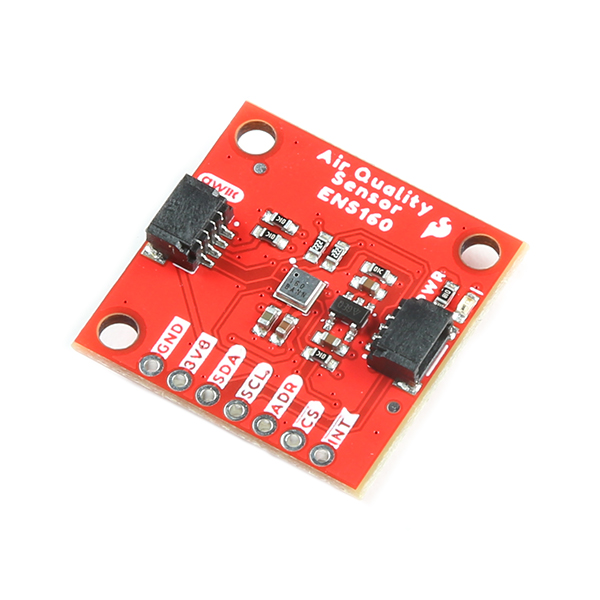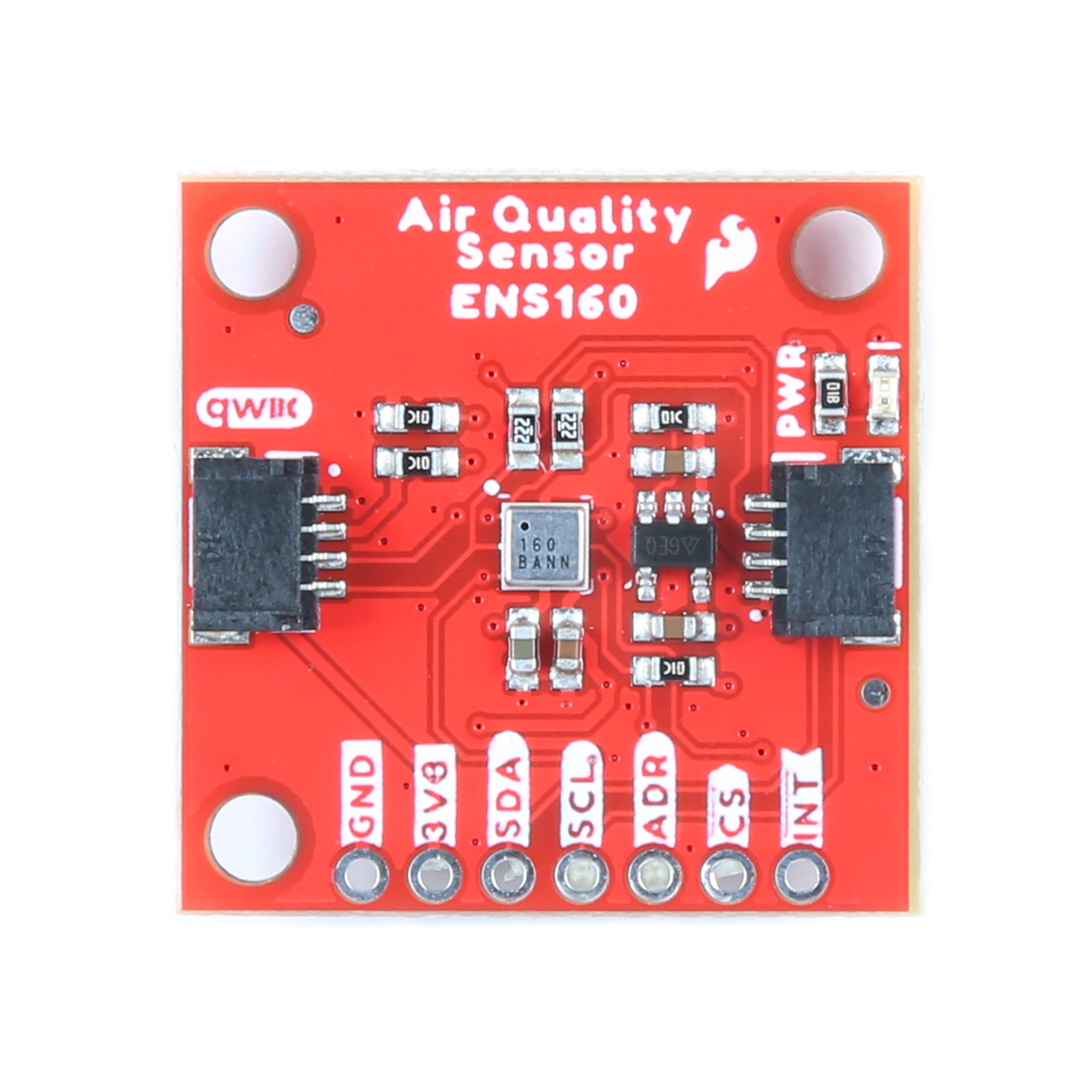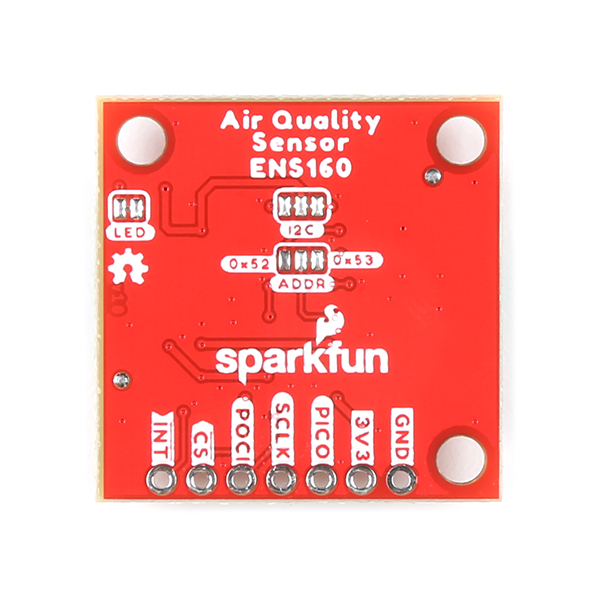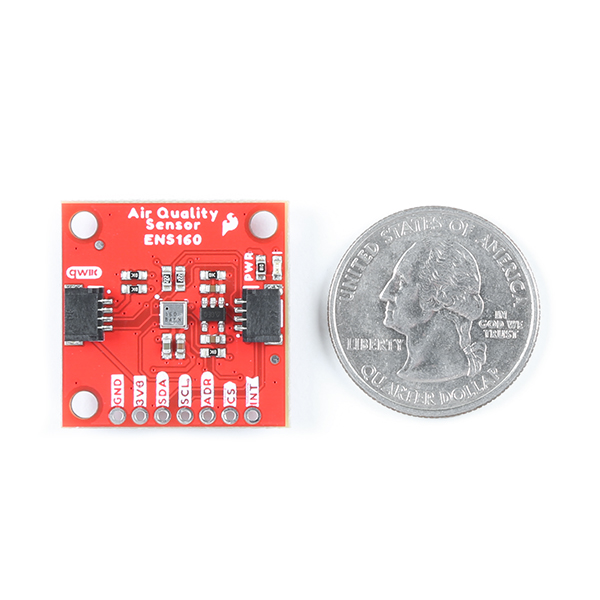SparkFun Indoor Air Quality Sensor - ENS160 (Qwiic)
The SparkFun ENS160 Indoor Air Quality Sensor is a digital multi-gas sensor solution with four sensor elements that can be used in a wide range of applications including building automation, smart home, and HVAC. The independent hotplate control allows the detection of volatile organic compounds (VOCs) including ethanol, toluene, hydrogen, and oxidizing gases with superior sensitivity. The ENS160 supports intelligent algorithms to process raw sensor measurements on-chip. These algorithms calculate CO2-equivalents, TVOC, air quality indices (AQIs), and perform humidity and temperature compensation, as well as baseline management, all on-chip. Raw sensor measurements can be read for further customization.
The ENS160 from ScioSense is a digital multi-gas sensor consisting of four independent heaters and gas sensor elements based on metal oxide (MOX) technology and a controller. TrueVOC® air quality detection provides outputs such as eCO2, TVOC, and AQI in compliance with worldwide IAQ standards.
Along with the plug-and-play Qwiic connectors, both I2C and SPI functionality have been broken out to 0.1"-spaced pins in case you prefer to use a breadboard.
Note: The default I2C address of the ENS160 is 0x53 and is jumper selectable to 0x52.
The SparkFun Qwiic Connect System is an ecosystem of I2C sensors, actuators, shields and cables that make prototyping faster and less prone to error. All Qwiic-enabled boards use a common 1mm pitch, 4-pin JST connector. This reduces the amount of required PCB space, and polarized connections mean you can’t hook it up wrong.
- Uses I2C interface (Qwiic-enabled)
- I2C Addresses: 0x53 (Default) or 0x52
- 2x Qwiic Connectors
- Operating voltage range
- VDD: 1.71-1.98V
- VDDIO: 1.71-3.6V
- Typically 3.3V if using the Qwiic cable
- Wide operating ranges
- temperature: -40 to +85°C
- humidity: 5 to 95%
- IAQ standard compliance for AQI, eCO2, and TVOC
- Immunity to humidity and ozone
- Superior output stability over the whole T and RH operating ranges
- Effective ozone compensation
- Independent sensor heater control for highest VOC selectivity and outstanding background discrimination.
SparkFun Indoor Air Quality Sensor - ENS160 (Qwiic) Product Help and Resources
SparkFun Indoor Air Quality Sensor - ENS160 (Qwiic) Hookup Guide
November 11, 2022
Is your air safe? Check your eCO2, TVOC, and AQI levels with the new SparkFun Indoor Air Quality Sensor - ENS160!
Core Skill: Programming
If a board needs code or communicates somehow, you're going to need to know how to program or interface with it. The programming skill is all about communication and code.
Skill Level: Competent - The toolchain for programming is a bit more complex and will examples may not be explicitly provided for you. You will be required to have a fundamental knowledge of programming and be required to provide your own code. You may need to modify existing libraries or code to work with your specific hardware. Sensor and hardware interfaces will be SPI or I2C.
See all skill levels
Core Skill: Electrical Prototyping
If it requires power, you need to know how much, what all the pins do, and how to hook it up. You may need to reference datasheets, schematics, and know the ins and outs of electronics.
Skill Level: Rookie - You may be required to know a bit more about the component, such as orientation, or how to hook it up, in addition to power requirements. You will need to understand polarized components.
See all skill levels
Comments
Looking for answers to technical questions?
We welcome your comments and suggestions below. However, if you are looking for solutions to technical questions please see our Technical Assistance page.
Customer Reviews
No reviews yet.





